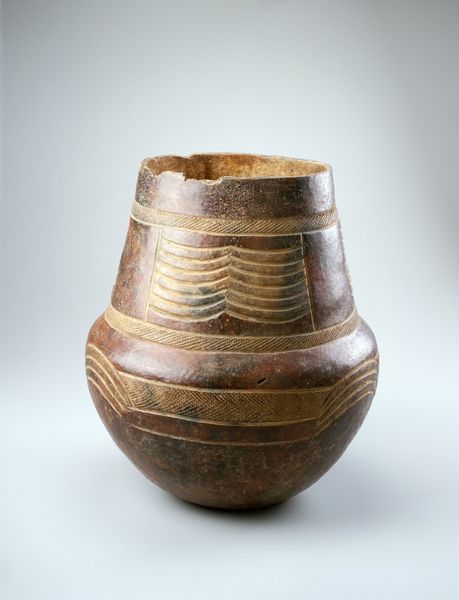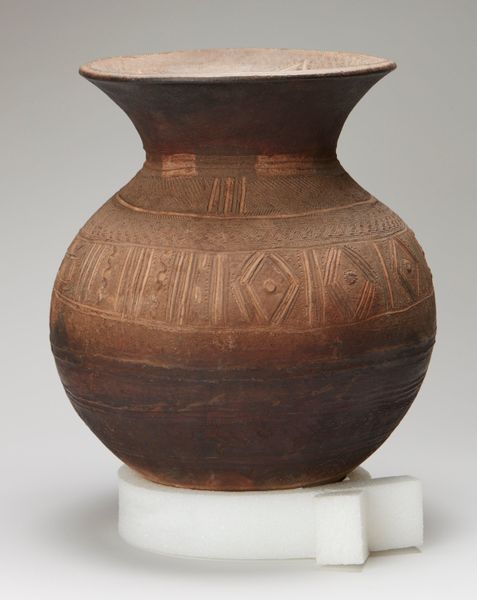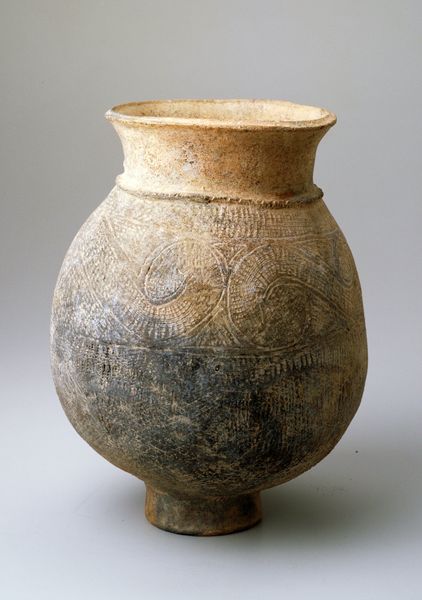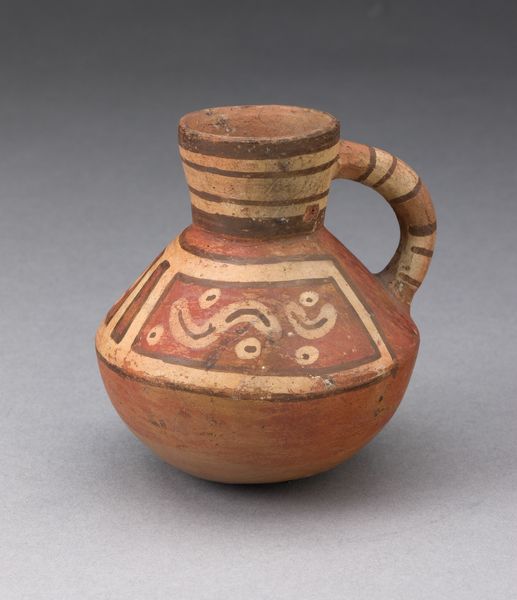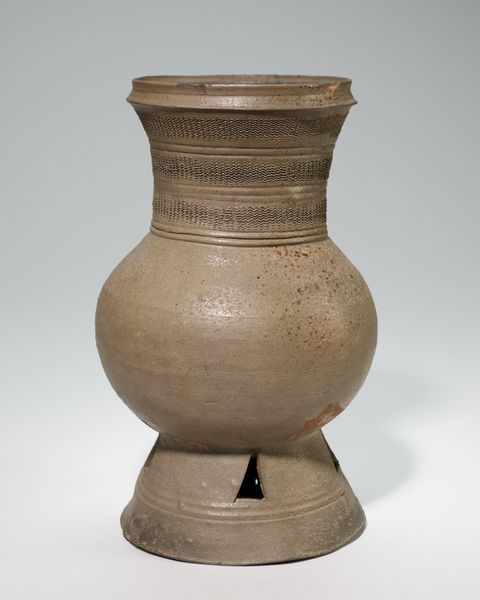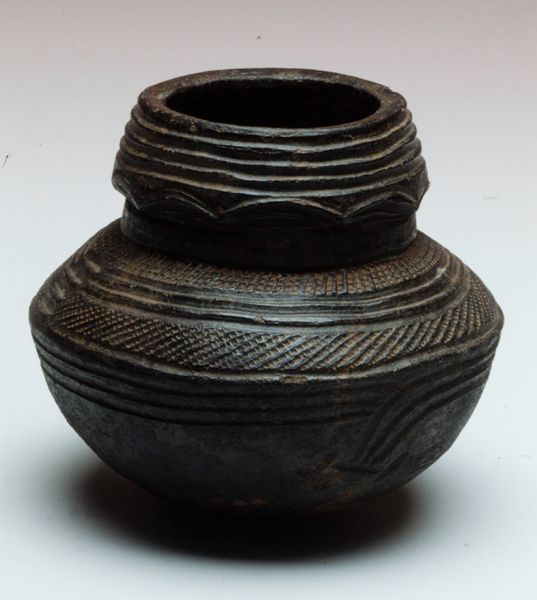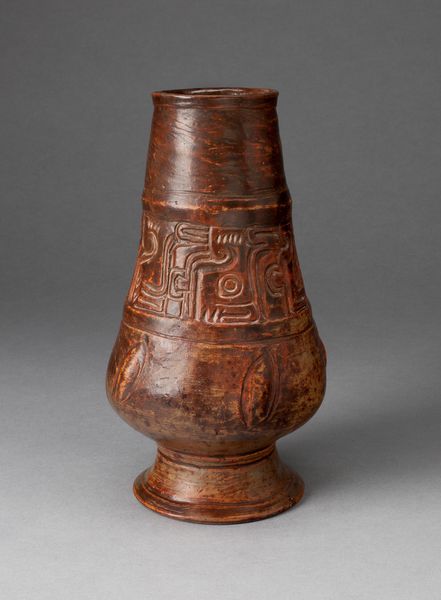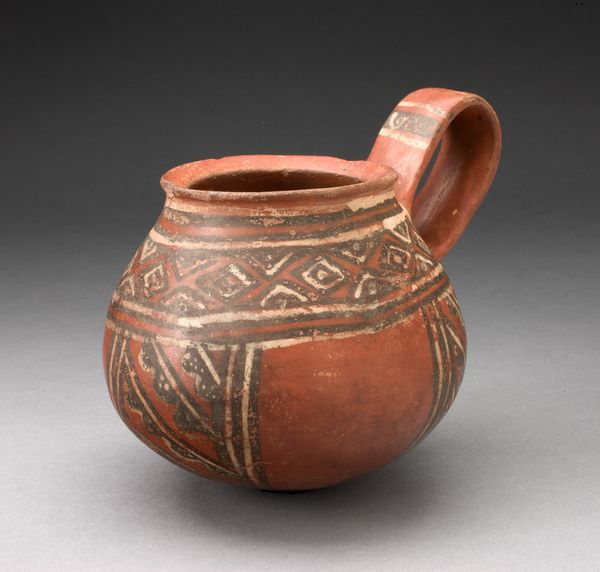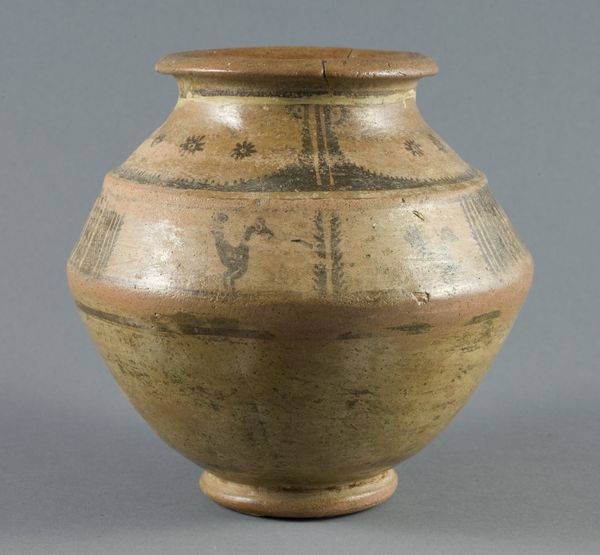
ceramic, earthenware, sculpture
#
african-art
#
ceramic
#
form
#
earthenware
#
sculpture
#
earthenware
#
decorative-art
Dimensions: 11 3/4 x 8 3/4 x 6 1/2 in. (29.85 x 22.23 x 16.51 cm)
Copyright: Public Domain
Editor: This is an earthenware vessel from the Nupe people, dating from around the 20th century. The rough texture and simple design give it such a grounded presence. What strikes me is its utilitarian aesthetic, it feels so handmade. What are your initial thoughts? Curator: I’m drawn to the labor evident in its creation. Consider the hands shaping the earthenware, the digging and preparation of the clay itself. It bridges the gap between functional object and art. How do you see its decorative elements functioning in that relationship? Editor: Well, the decorations *do* seem purposefully designed – like, adding geometric patterns. Do you think those hold cultural significance, or serve purely as surface adornment? Curator: That's precisely what a materialist perspective can unravel. Were these patterns tied to ritual use, signifying status or communicating information? Think of the pot as embedded in a larger system of production, exchange, and meaning. What tools did the artist likely use to create such detailed carvings on a curving surface? Editor: That’s true, that kind of analysis contextualizes the vessel beyond just its appearance. I wonder if the maker considered this a functional vessel or as a display item. Curator: And what determined that distinction in Nupe society at that time? Consumption patterns can be very telling. Now imagine tracing the movement of materials needed... where did the clay come from, and how was it sourced? Editor: It's incredible to consider that simple materials hold so much embedded history! Viewing art through the lens of material production makes you aware of labor conditions of artists across time and cultural identities. Curator: Exactly. We move beyond mere aesthetics, grounding the object within the networks of its making and unearthing deeper insights.
Comments
No comments
Be the first to comment and join the conversation on the ultimate creative platform.
